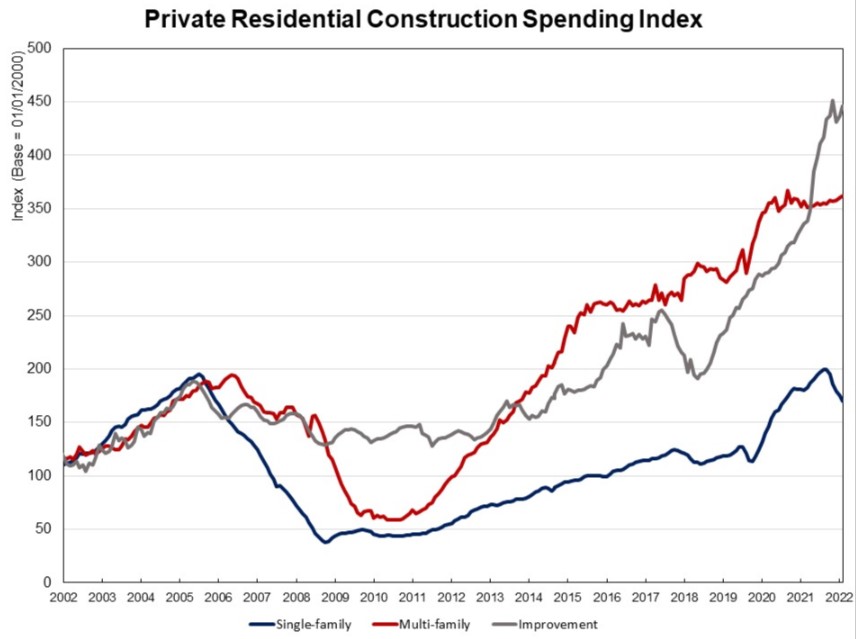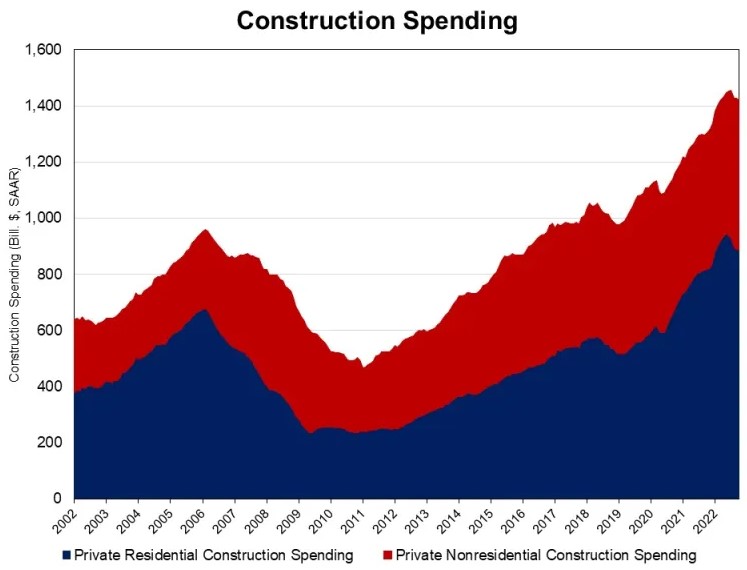Chart: Residential Spending Slips Slightly, Up 8.6% YOY
Originally Published by: NAHB — December 1, 2022
SBCA appreciates your input; please email us if you have any comments or corrections to this article.
Private residential construction spending declined 0.3% in October, as spending on single-family construction dropped 2.6%. Private residential construction spending fell for the fifth consecutive month, standing at an annual pace of $887.2 billion. This was about 8.6% higher compared to a year ago.
The monthly decline is largely attributed to lower spending on single-family construction. Single-family construction spending dropped 2.6% in October, after a decline of 2.7% in September. Compared to a year ago, it is 5.4% lower. High mortgage rates, flagging housing demand, and supply-chain disruptions have put a damper on the housing market.
Multifamily construction spending edged up by 0.6% in October, after an increase of 0.64% in September. This was 1.6% over the October 2021 estimates. Private residential improvements rose by 2.1% in October and was a dramatic 32.6% higher over a year ago. Keep in mind that construction spending reports the value of property put-in-place, so it is a measure of property value placed in service at the end of the construction pipeline.
The NAHB construction spending index, which is shown in the graph below (the base is January 2000), illustrates how construction spending on single-family has slowed since early 2022 under the pressure of supply-chain issues and elevated interest rates. Multifamily construction held steady in recent months, while improvement spending has increased pace since early 2019. Before the COVID-19 crisis hit the U.S. economy, single-family and multifamily construction spending experienced solid growth from the second half of 2019 to February 2020, followed by a quick post-covid rebound since July 2020.


Spending on private nonresidential construction decreased by 0.8% in October to a seasonally adjusted annual rate of $533.2 billion. The monthly private nonresidential spending decrease was mainly due to less spending on the class of manufacturing category (-$3.6 billion), followed by the power category (-$0.7 billion), and the commercial property (-$0.4 billion).
